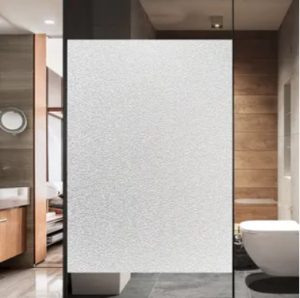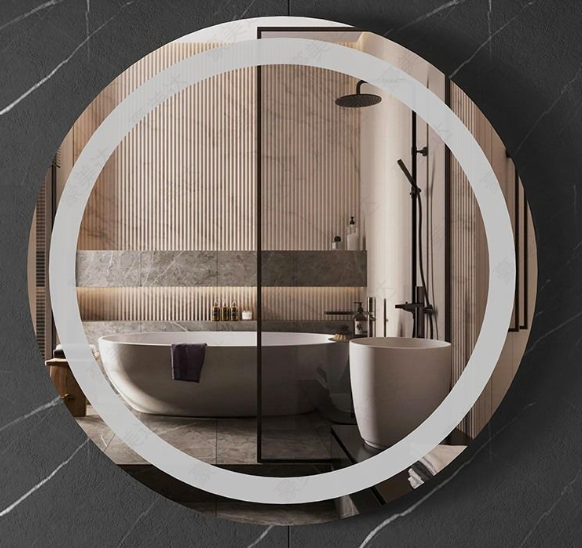Comparison between Laser Marking and Traditional Sandblasting Methods
Smart mirror sandblasting is a method of treating mirror surfaces through technological means to create a frosted effect on the surface. This treatment is typically applied to glass mirrors, lenses, frames, etc., to alter their surface smoothness or translucency, achieving specific decorative, privacy, or functional requirements.
Smart mirror frosting can typically be achieved through the following methods:
- Chemical Etching: Utilizing chemical substances to treat the mirror surface, causing microscopic etching or changes on the surface to achieve a frosted effect. This method is commonly used for glass surface treatment, such as using acidic or alkaline solutions for etching.
- Mechanical Sandblasting: Employing mechanical equipment such as grinding wheels, sandpaper, etc., to physically abrade or sandblast the mirror surface, altering its texture or appearance.
- Laser Sandblasting: Utilizing laser technology to selectively irradiate the mirror surface, causing localized heating, melting, and subsequent cooling and solidification, resulting in a fine frosted effect. This method typically offers high precision and controllability, allowing for the creation of complex patterns or textures.
“Intelligent Mirror Laser Sandblasting Machine: Working Principle and Differences from Traditional Intelligent Mirror Sandblasting Methods
- Working Principle:
- Intelligent Mirror Laser Sandblasting Machine: Utilizes laser beams to irradiate the glass surface. Through the high energy and high focusing characteristics of the laser, specific areas of the glass surface are heated and melted. Controlled processing then rapidly cools and solidifies the melted areas, creating a fine sandblasting effect.
- Traditional Intelligent Mirror Sandblasting Methods: Typically employ chemical substances or mechanical methods such as grinding wheels, sandpaper, etc., to sandblast the glass surface. This method requires additional chemical agents or a significant amount of mechanical equipment and involves a more complex processing procedure.
- Precision and Control:
- Intelligent Mirror Laser Sandblasting Machine: Due to the high precision and controllability of laser technology, precise treatment of the glass surface can be achieved. Laser parameters and positions can be adjusted according to requirements to achieve different shapes, depths, and densities of sandblasting effects.
- Traditional Intelligent Mirror Sandblasting Methods: It is often challenging to achieve precise control, and the processing result may be uneven or less than ideal due to operational techniques or equipment limitations.
- Environmental Friendliness and Safety:
- Intelligent Mirror Laser Sandblasting Machine: Does not require additional chemical substances and generates minimal waste, making it relatively environmentally friendly. Additionally, the operational process poses lower safety risks to operators.
- Traditional Intelligent Mirror Sandblasting Methods: Typically involve the use of chemical agents and carry safety risks during mechanical operations, such as dust and flying debris.
- Efficiency and Automation:
- Intelligent Mirror Laser Sandblasting Machine: With the high efficiency and automation of laser technology, rapid and efficient sandblasting processing can be achieved, saving labor and time costs.
- Traditional Intelligent Mirror Sandblasting Methods: Usually require longer processing times and may involve more manual labor, resulting in relatively lower efficiency.
In summary, the Intelligent Mirror Laser Sandblasting Machine offers advantages such as high precision, environmental friendliness, safety, and efficiency over traditional intelligent mirror sandblasting methods. It represents a more advanced and efficient technology for glass surface treatment.”


